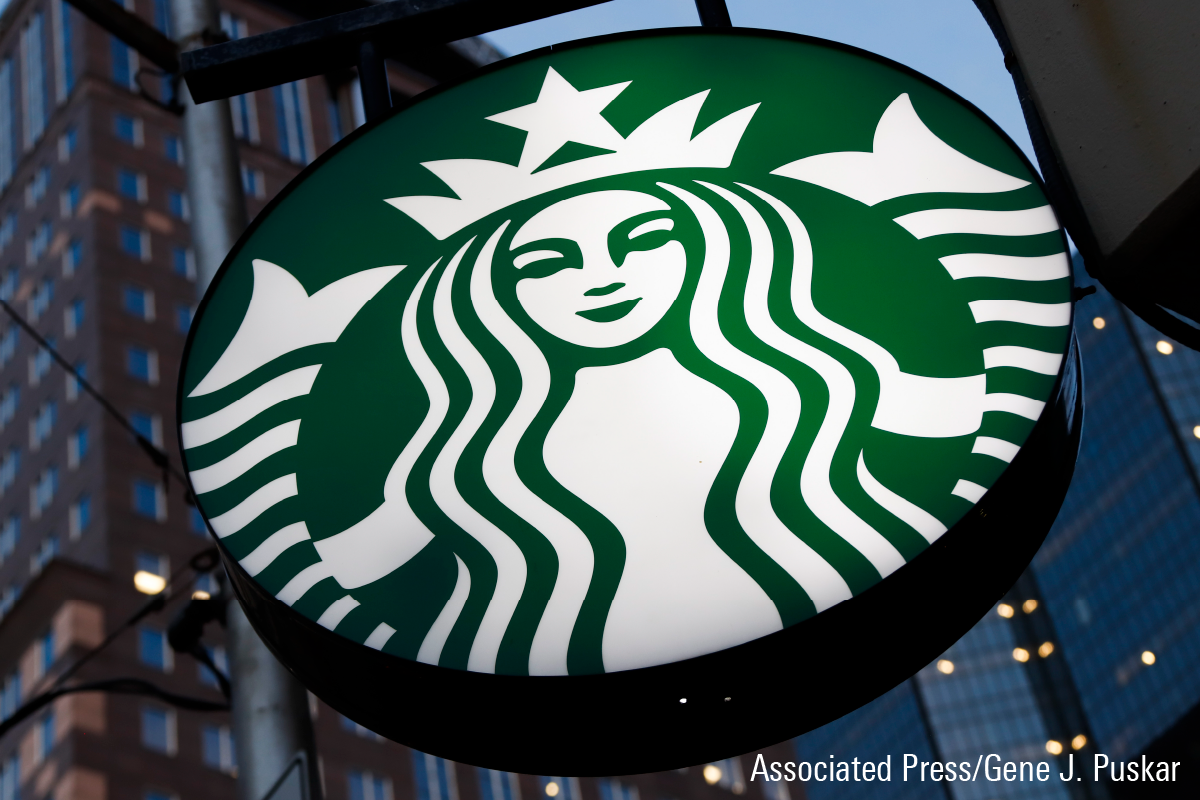Starbucks Investors, Don't Panic
One company's bad news from China doesn’t mean trouble for the coffee giant.

Starbucks SBUX investors took note of a bleak intraquarter report from Yum China on Sept. 14, sending the coffee chain’s shares down as they contemplated exposure to the region. Yum China management indicated that the sustained spread of the delta variant has resulted in piecemeal closures across 16 of 23 Chinese provinces, and it now anticipated a 50%-60% decline in quarterly operating profit, attributable to deleverage and rising input costs.
We urge investors not to read too much into these headlines, as the impact of near-term pressures on Starbucks will be blunted by its hedged commodity prices through at least mid-2022, its geographic diversification, and a number of differences between it and Yum China. We maintain our $109 fair value estimate and wide economic moat rating for Starbucks, which is trading in a range we consider fairly valued.
With China representing 45%-55% of Starbucks’ international sales and 10%-13% of aggregate sales, a 50%-60% drop in quarterly profitability would certainly drag on international margins, but the consolidated blow to operating income for the year would be small--2.2%, by our calculations--given that international EBIT represented less than 20% of the company’s prepandemic consolidated operating income.
Lockdown concerns are reasonable but likely overblown, with new COVID-19-cases (39 per day, per Reuters) in China representing only about 1% of the 2020 peak. In our view, sustained restrictions are unlikely at these caseloads, and businesses figure to be better equipped to navigate them, with enhanced off-premises options, delivery integration, and low-touch mobile order and payment providing suitable workarounds. A dine-in friendly culture could certainly pinch near-term results, but geographic diversification and strength in the United States, its largest market, should afford Starbucks the leeway to maintain its growth trajectory and financial flexibility, leaving our long-term assumptions intact.
We Continue to Like Starbucks’ Strategic Focus
Starbucks is the largest specialty coffee chain in the world, with $23.5 billion in 2020 revenue representing nearly 9% of the aggregate cafe and bar market, according to Euromonitor, easily eclipsing closest peer Dunkin’s $8.9 billion and 3%. Its attention to premium-quality coffee distinguishes it from competing chains, allowing Starbucks to charge substantially higher prices while creating a buzz around what has historically been a commoditized product.
While the specialty coffee space has attracted significant competition in recent years, Starbucks’ premium positioning has allowed the company to outperform the aggregate market, with annual price increases in the Americas segment (5.2%) and unit openings (4.1%) handily outpacing the those of the industry (0% and 0.1%, respectively). We believe that the strategy remains appropriate moving forward, with specialty espresso and cold-brew beverages unlikely to be displaced by quick-service restaurants, coffee vending machines, or at-home consumption.
Starbucks’ recent strategic focus on streamlined operations, adjacent menu innovation, digital engagement, and selective store closures strikes us as reasonable, with new openings concentrated in underpenetrated Middle American and Chinese markets. The closure of underperforming stores and repositioning in markets with large daytime populations, like Manhattan, should see top-line impacts minimized by sales transfers (shifting sales from one store to a nearby location), while new-format stores and an emphasis on high-volume suburban drive-thrus could catalyze a strong uptick in average unit volume.
The company’s ongoing investments in its loyalty program, with nearly 24 million active users at the end of the third quarter of fiscal 2021, are likely to resonate with an audience that has grown increasingly amenable to digital ordering, with some 52% of order volume driven by loyalty program participants in fiscal 2020. Though we anticipate near-term pain until coronavirus-related restrictions abate, we believe that Starbucks remains a compelling long-term “growth at scale” story, with top-line growth of 9.3% through 2025 and EPS growth averaging 8.5% (excluding 2021) in our base-case scenario.

/s3.amazonaws.com/arc-authors/morningstar/52d86652-ba2b-43fe-a8fc-523af1fa6e47.jpg)
/cloudfront-us-east-1.images.arcpublishing.com/morningstar/IORW4DN3VVC3BC4JO7AQLSJTF4.jpg)
/cloudfront-us-east-1.images.arcpublishing.com/morningstar/ODMSEUCKZ5AU7M6BKB5BUC6G5M.png)
/cloudfront-us-east-1.images.arcpublishing.com/morningstar/TGMJAWO4WRCEBNXQC6RFO5TOAY.png)
:quality(80)/s3.amazonaws.com/arc-authors/morningstar/52d86652-ba2b-43fe-a8fc-523af1fa6e47.jpg)